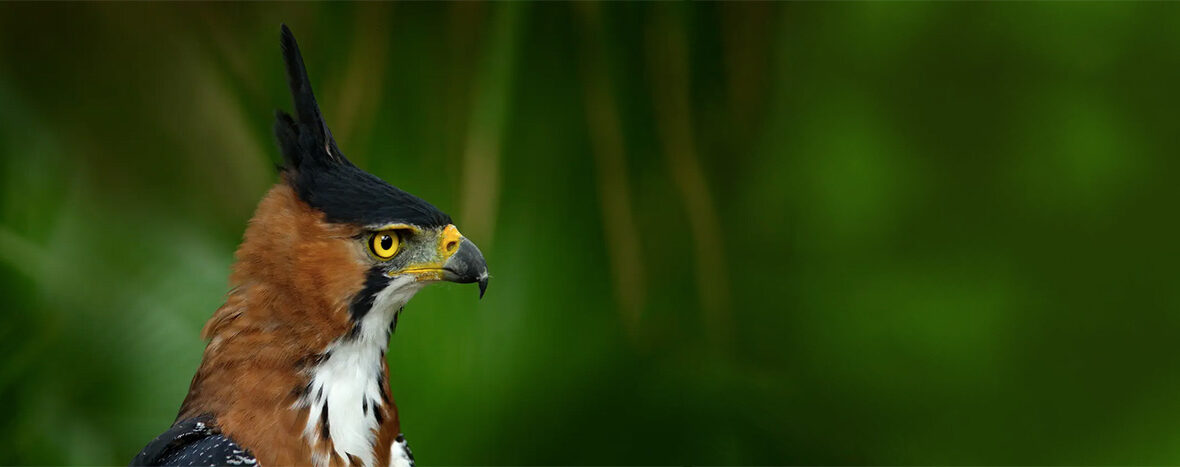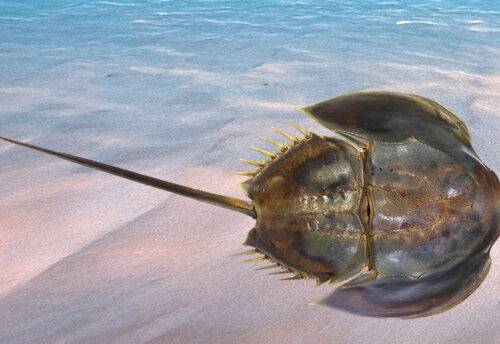
The ornate hawk-eagle can be found in Mexico, Central America, and South America. They prefer tall, wet, and/or humid, tropical and subtropical forests, however they will tolerate other forest habitats as well. Unfortunately, these beautiful eagles are threatened by habitat loss and destruction at the hands of deforestation, due to logging, farming, & ranching; and they are also subjected to hunting and trapping. The IUCN lists these eagles as Near Threatened. Their populations are also decreasing.
First the Stats…
Scientific name: Spizaetus ornatus
Weight: Up to 10 lbs.
Length: Up to 27 inches
Wingspan: Up to 4.8 feet
Lifespan: Up to 14 years
Now on to the Facts!
1.) There are less than an estimated 500,000 ornate hawk eagles remaining as of 2022.
2.) Their primary killing weapon is their rear talon. It measures up to 1.44 inches.
3.) Ornate hawk-eagles are diurnal (active during the day).
4.) These eagles have the largest distribution of all the 9 species of eagles endemic to the neotropical regions. They cover over an estimated 1,367,016 total square miles.
5.) Hawk-eagles are not migratory.
But wait, there’s more on the ornate hawk-eagle!
6.) They can be found from sea level to 4,900 foot elevations. On rare instances they have been found as high as 9,800 elevations.
7.) The preferred prey animals are medium to large birds, small to medium sized mammals, and on rare occasions they will feast on reptiles.
Did you know…?
Due to their skillful flight pursuits, aka tail-chases, these birds are similar to hawks in agility. Hence the namesake of hawk-eagle.
8.) Their hunting style is based on looking for conspicuous prey animal behaviors. If a prey animal is caught unaware, these eagles will happily exploit this “slip-up”.
9.) Ornate hawk-eagles prey on an estimated 100+ different critters. Some animals recorded have weighed in at over 8 lbs.
10.) Like most eagles, these critters dwell in either pairs or individually.
But wait, there’s still more on the ornate hawk-eagle!
11.) Courting consists of acrobatic and noisy antics performed in mid-air.
12.) These eagles breed typically every other year, unless the previous year’s attempts failed.
Did you know…?
When prey birds are presented to the female, she will either behead the bird or tear off it’s beak before offering it to her chick.
13.) Copulation usually lasts for up to 12 seconds with 60 copulations recorded in a 204 hour observation.
14.) Females lay a single egg.
15.) It is the female who incubates the egg while the male retrieves food for them both.
But wait, there’s still a tad more on the ornate hawk-eagle!
16.) The chick begins tearing at and consuming food at around 54 days old.
17.) Fledging time is about 93 days of age.
18.) By 12 months of age, the chick is independent.
Now a Short Ornate Hawk-Eagle Video!
Be sure to share & comment below! Also, check out the Critter Science YouTube channel. Videos added regularly!
Want to suggest a critter for me to write about? Let me know here.
Some source material acquired from: Wikipedia & IUCN
Photo credit: Gordon Ramel – Earth Life



